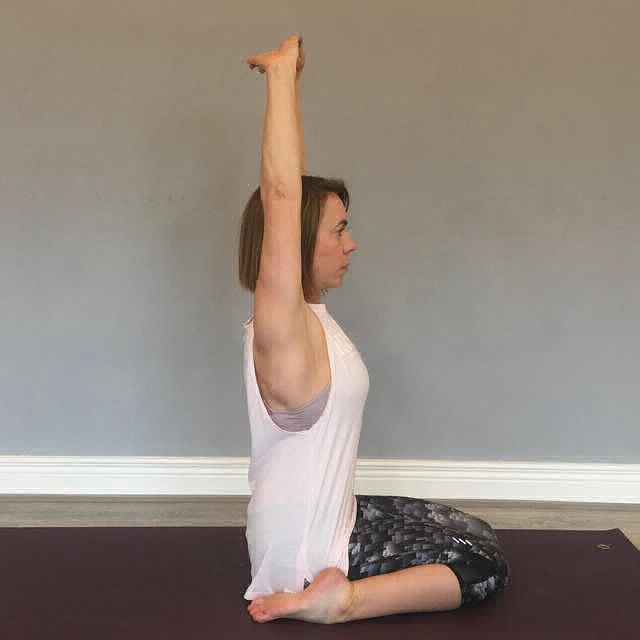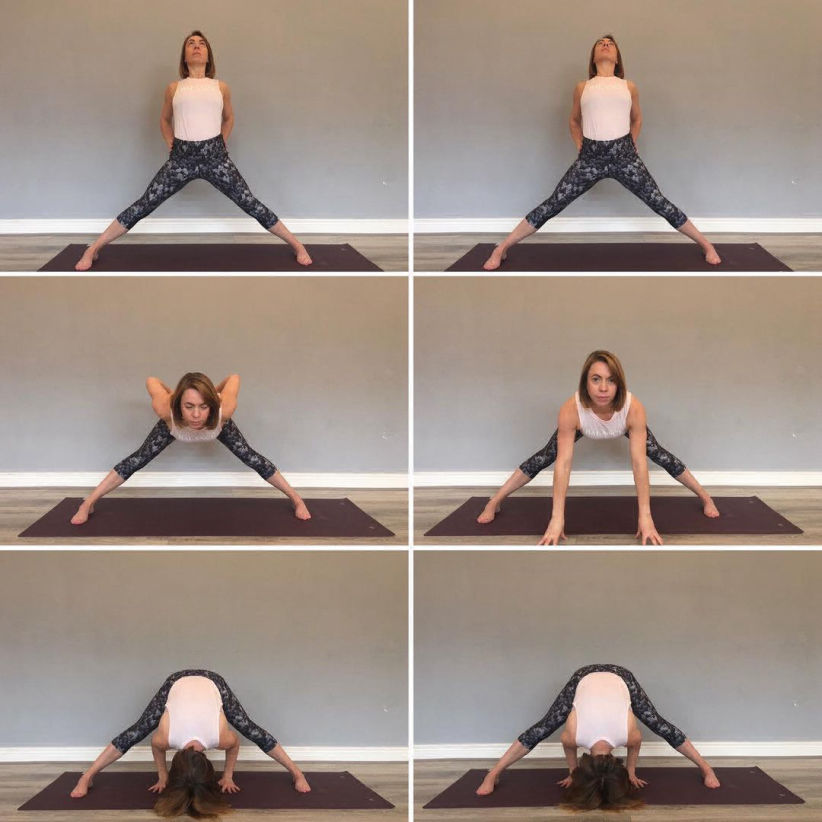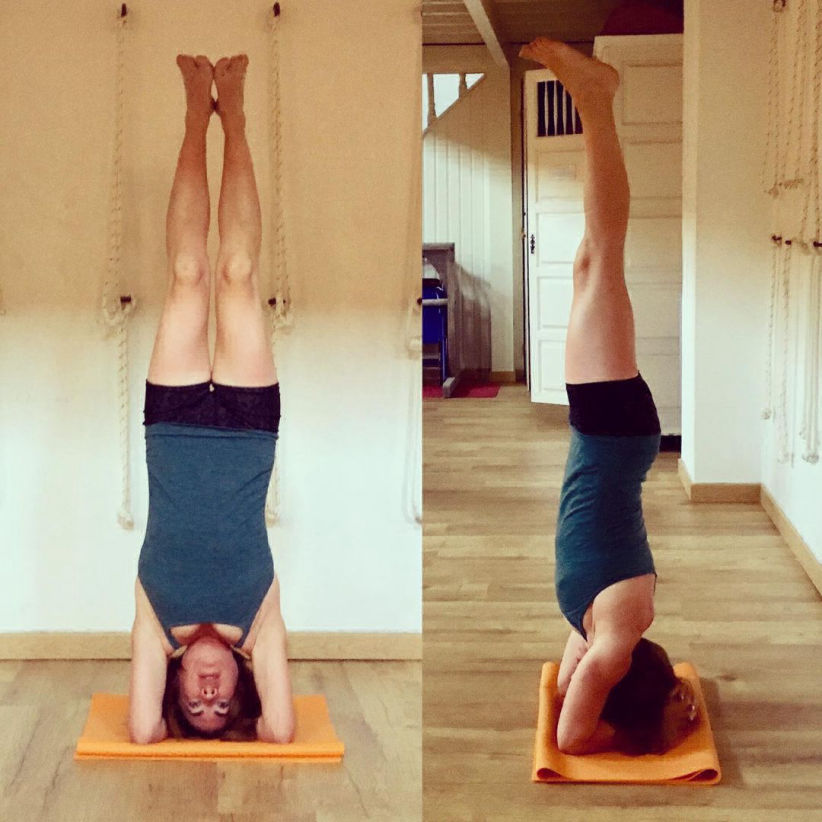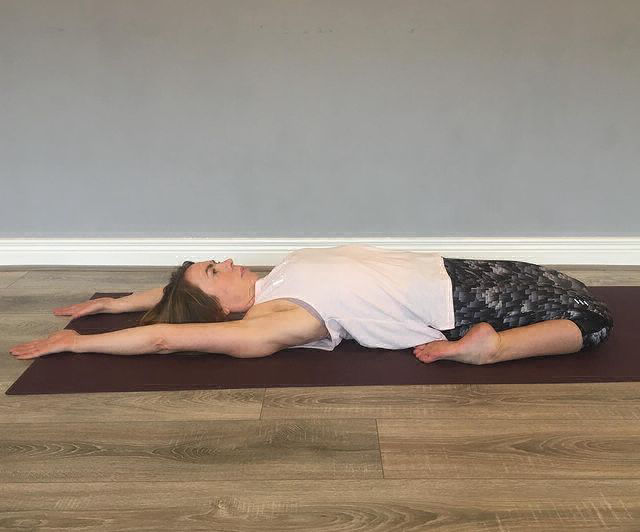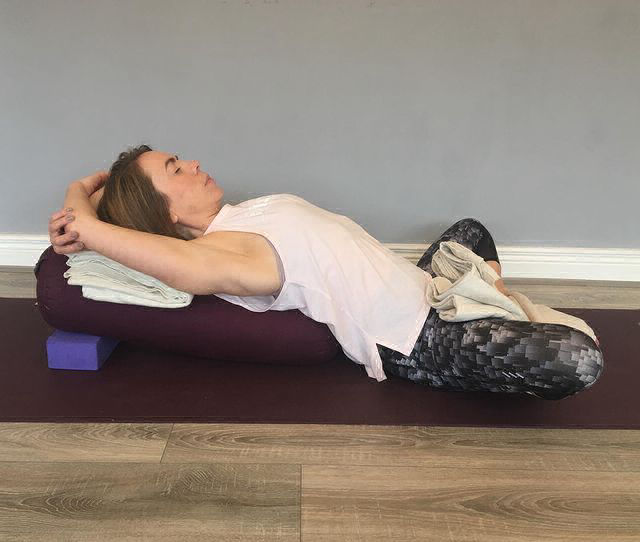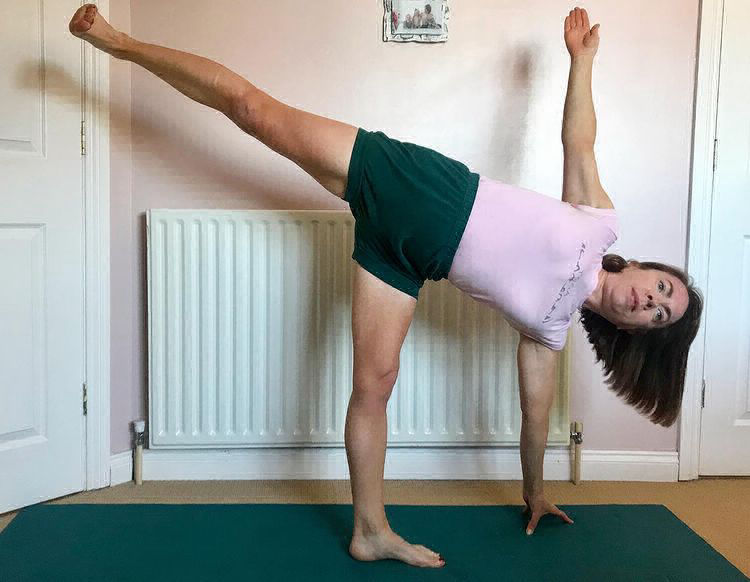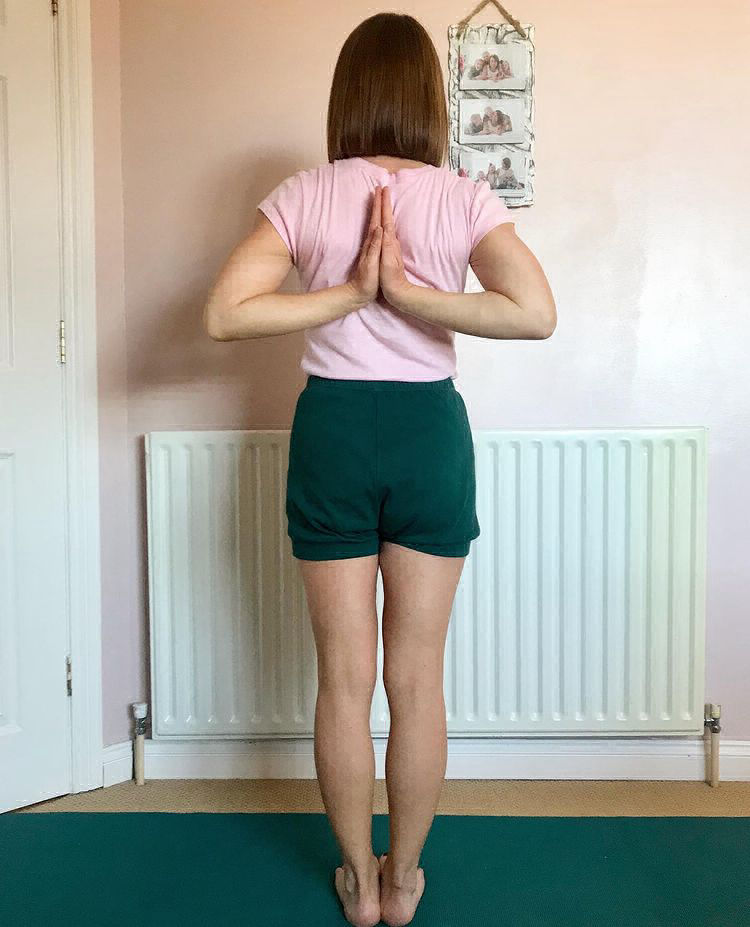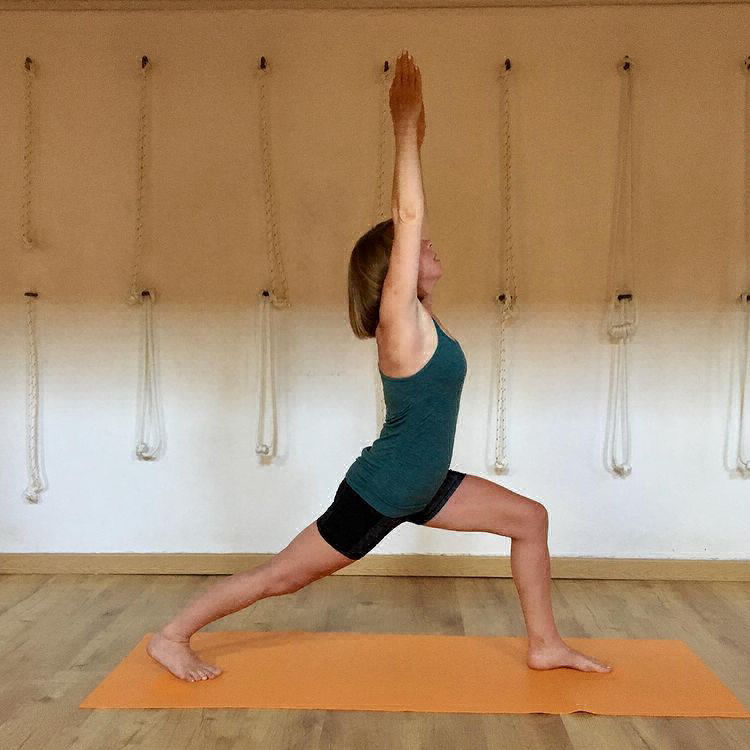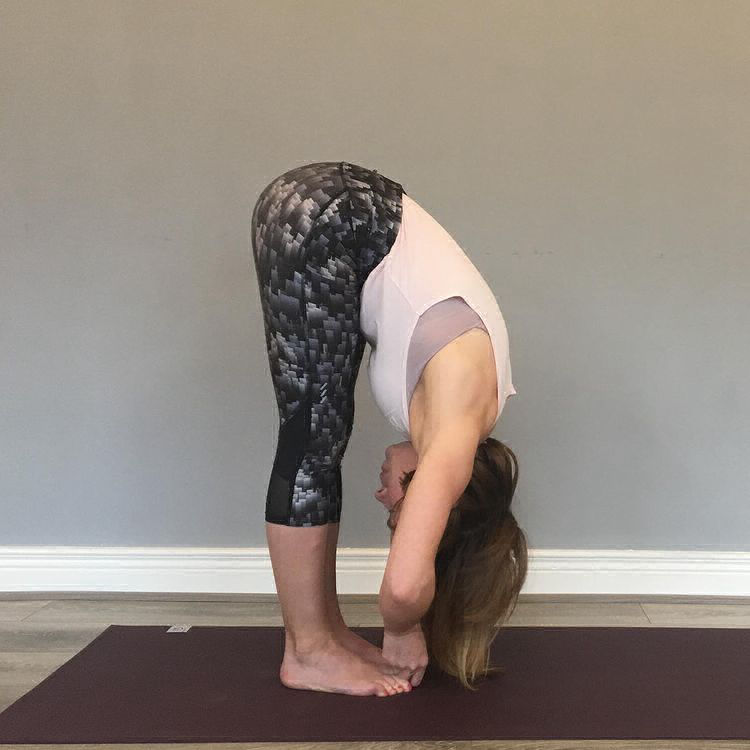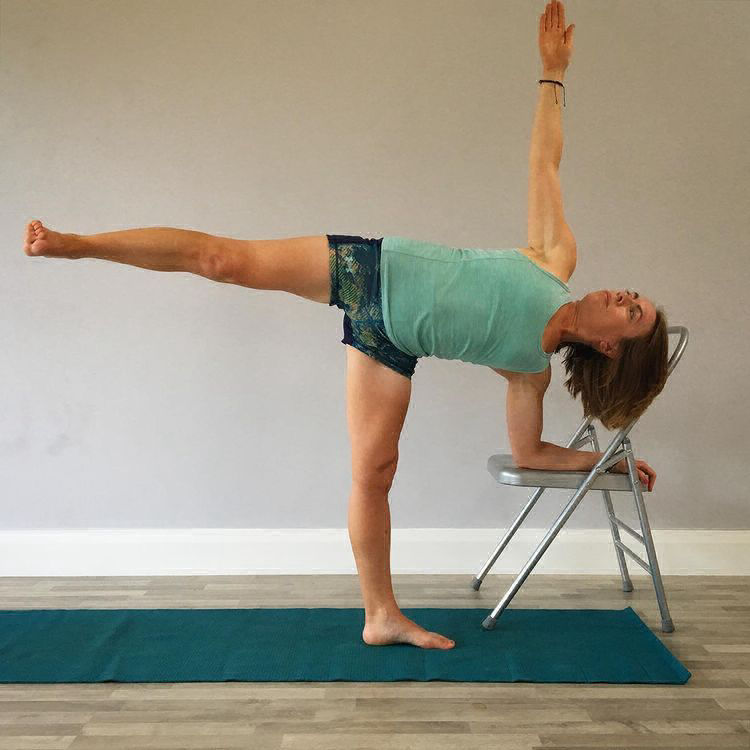Parsvottanasana
Parsva - meaning ‘side’ or ‘flank’
Ut - meaning ‘intense’
Tan - meaning ‘to stretch’
Asana - meaning ‘pose’
This pose stretches both sides of the truck equally, and at the same time. It stretches the hamstrings and the shoulders. A tricky pose initially, which helps improve balance, stimulates the abdominal organs, and improves digestion.
With the hands in Namaskarasana, draw the shoulders and the elbows back. Keep the big toe of the leading leg planted firmly on the ground and turn the thigh of the leading leg from inside out. Keep both hips level then extend the trunk forward and rest the head on the leading leg shin. Keep both legs firm.

